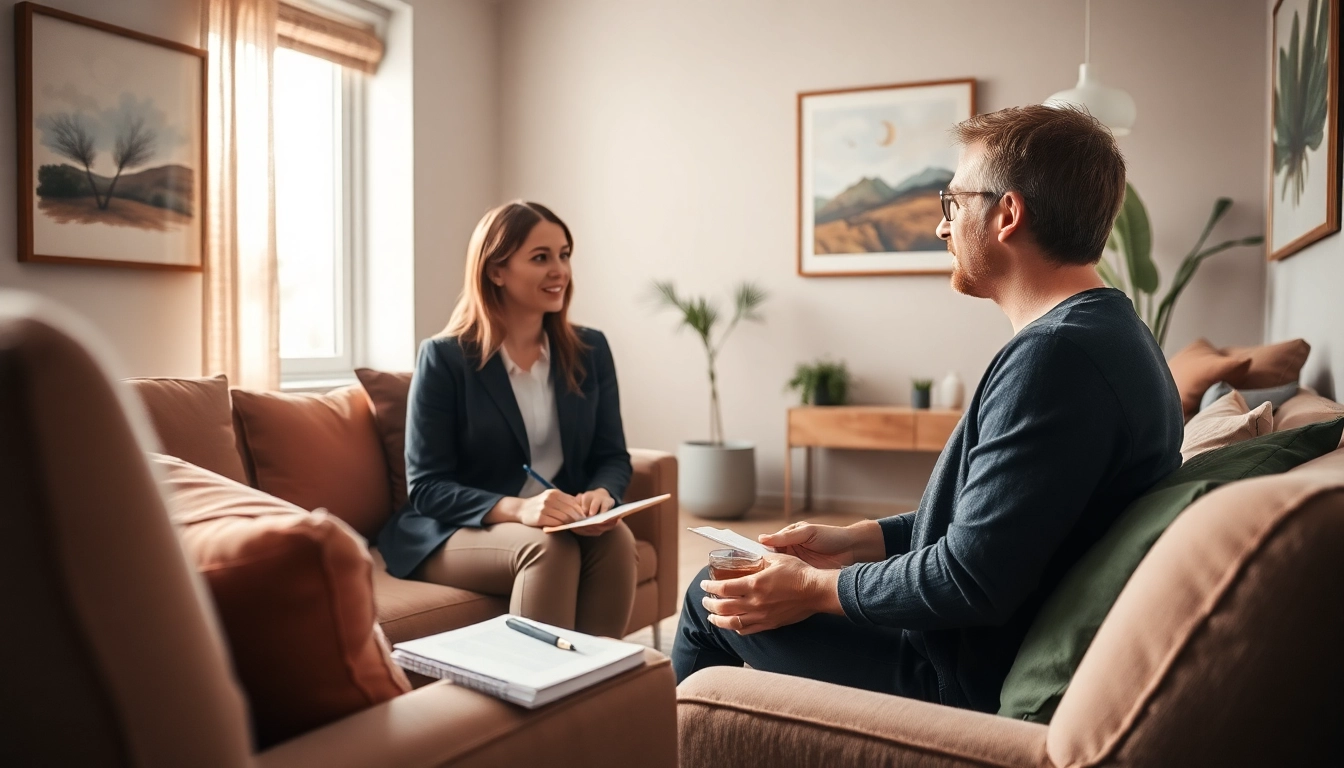Understanding Anxiety: Causes and Symptoms
What is Anxiety?
Anxiety is a natural response to stress—an emotional state characterized by feelings of tension, worried thoughts, and physical changes like increased blood pressure. For many, anxiety is a fleeting feeling; however, for others, it can develop into a debilitating disorder that affects daily living and overall well-being. In fact, anxiety disorders are among the most common mental health issues, affecting millions of people worldwide. The experience of anxiety can vary greatly, ranging from generalized anxiety to specific phobias, with symptoms manifesting in different ways. To effectively navigate through these challenges, understanding the nature of anxiety is the first step.
Common Symptoms of Anxiety Disorders
Anxiety disorders can present a variety of symptoms, varying in intensity from mild to severe. Common symptoms may include:
- Persistent worry or excessive fear about everyday situations.
- Physical symptoms such as increased heart rate, sweating, or trembling.
- Difficulty concentrating or racing thoughts.
- Sleep disturbances, including insomnia or restless sleep.
- Changes in appetite or weight.
- Feelings of impending doom or panic attacks.
Recognizing these symptoms can empower individuals to seek help and implement coping mechanisms effectively.
Triggers and Causes of Anxiety
Anxiety is often the result of a complex interplay between genetics, brain chemistry, personality, and life events. Various triggers can lead to heightened anxiety, including:
- Genetic Factors: A family history of anxiety disorders can increase the risk.
- Environmental Stressors: Traumatic or stressful events such as loss, trauma, or significant life changes.
- Medical Conditions: Certain health issues like heart disease, thyroid problems, or chronic illness can contribute to anxiety.
- Substance Abuse: Alcohol, caffeine, and recreational drugs can exacerbate anxiety symptoms.
Understanding these triggers is key in developing strategies for coping with anxiety in daily life.
Practical Tips for Dealing with Anxiety in Daily Life
Establishing a Routine for Calm
Creating a structured daily routine can provide a sense of normalcy and control, which is vital when dealing with anxiety. Here are some practical steps to establish a calming routine:
- Set Regular Sleep Patterns: Prioritize getting sufficient sleep and aim to go to bed and wake up at the same time each day.
- Incorporate Physical Activity: Regular exercise can help reduce anxiety symptoms by releasing endorphins, the body’s natural mood lifters.
- Plan Your Day: Develop a daily schedule that includes time for work, relaxation, and enjoyment. Block out moments for self-care.
Mindfulness and Relaxation Techniques
Mindfulness practices can significantly reduce anxiety by promoting present-moment awareness. Here are effective techniques to consider:
- Meditation: Simple breath-focused meditation can ground you in the present moment. Start with just a few minutes a day and gradually increase the duration.
- Progressive Muscle Relaxation: This involves tensing and relaxing different muscle groups to help release physical tension.
- Deep Breathing Exercises: Slow, deep breathing can activate the body’s relaxation response. Inhale deeply for a count of four, hold for four, and exhale for six.
Healthy Lifestyle Changes to Alleviate Anxiety
Making healthy lifestyle choices can play a crucial role in managing anxiety. Here are some changes to consider:
- Diet: Nutrition plays a pivotal role in mental health. Focus on a balanced diet rich in fruits, vegetables, whole grains, and omega-3 fatty acids.
- Avoiding Stimulants: Limit the intake of caffeine and sugar, as they can heighten anxiety symptoms.
- Staying Hydrated: Ensure that you are drinking enough water daily, as dehydration can impact your mood and energy levels.
Cognitive Behavioral Strategies for Managing Anxiety
Understanding Cognitive Behavioral Therapy
Cognitive Behavioral Therapy (CBT) is an evidence-based approach that helps individuals change negative thought patterns that contribute to anxiety. The focus is on identifying and challenging irrational thoughts while developing effective coping strategies. According to the dealing with anxiety approach, CBT can be tailored to individual needs and tailored to various situations.
Reframing Negative Thoughts
Reframing involves shifting your perspective about a situation to reduce anxiety. For example, instead of thinking, “I can’t handle this job interview,” shift to, “I am prepared, and I can do my best.” This shift in mindset can lead to more positive outcomes and reduce anxiety levels. Techniques to consider include:
- Keeping a Thought Journal: Write down your anxious thoughts and challenge them by examining the evidence for and against them.
- Affirmations: Use positive affirmations to reinforce a confident mindset.
- Perspective Shift: Practice seeing the situation from different viewpoints.
Gradual Exposure Techniques
Gradual exposure is a technique where individuals face their fears bit by bit in a controlled manner. This approach is most effective for phobias and chronic anxiety situations. Some steps for effective gradual exposure include:
- Identify Your Fear: Clearly define what makes you anxious.
- Create a Hierarchy: List situations that cause anxiety from least to most stressful.
- Take Small Steps: Gradually expose yourself to these situations, starting with the least anxiety-inducing, and build your way up.
Seeking Professional Help for Anxiety Disorders
When to See a Therapist
Many individuals benefit from seeking professional help. Signs that it may be time to consult with a therapist include:
- Anxiety interferes with your daily life and relationships.
- You find it difficult to control your anxiety despite trying self-help strategies.
- Feelings of hopelessness or worthlessness.
- Increased substance use as a way to cope with anxiety.
Overview of Treatment Options
Treatment for anxiety disorders can involve a combination of therapies, medications, and lifestyle changes. Common treatment options include:
- Therapy: Cognitive Behavioral Therapy, Exposure Therapy, and Mindfulness-Based Stress Reduction can all be effective.
- Medications: Antidepressants, anti-anxiety medications, and beta-blockers can be prescribed to help manage symptoms.
- Self-Help: Regular exercising, maintaining a healthy diet, and engaging in relaxation practices can enhance treatment outcomes.
Support Groups and Community Resources
Support groups provide an invaluable resource for individuals dealing with anxiety disorders. Connecting with others who share similar experiences can reduce feelings of isolation and foster a sense of community. Resources may include:
- Local community mental health organizations offering support groups.
- Online forums and platforms for sharing experiences and coping techniques.
- Hotlines offering immediate assistance and support.
Building Resilience: Long-Term Strategies for Dealing with Anxiety
Creating a Support System
Developing a strong support system is crucial in managing anxiety over the long term. Consider these steps:
- Identify Trusted Individuals: Reach out to friends, family, or colleagues who can provide emotional support.
- Participate in Group Activities: Engaging in social activities or interest groups can offer connection and reduce feelings of isolation.
- Communicate Openly: Be honest about your feelings and challenges with your support network.
Continuous Learning and Self-Improvement
Personal growth can foster resilience against anxiety. Techniques to consider include:
- Educational Resources: Read books, attend workshops, or take courses related to anxiety management.
- Journaling: Reflect on your journey and document progress and setbacks.
- Set Goals: Establish both short-term and long-term goals, providing a sense of direction and achievement.
Maintaining a Balanced Perspective on Anxiety
Recognizing that anxiety is a part of life can offer a healthier perspective. Rather than viewing anxiety solely as a negative, acknowledge its role in alerting you to potential threats. Techniques include:
- Reinforcing Positivity: Focus on accomplishments and moments of joy.
- Acceptance: Embrace anxiety as a natural emotion rather than rejecting it.
- Mindfulness Practice: Regular engagement in mindfulness can help keep anxiety in check.
In conclusion, dealing with anxiety requires a comprehensive approach encompassing understanding, practical strategies, therapeutic techniques, and community support. By focusing on healthy habits and seeking help when necessary, individuals can find their path to calm and resilience, improving the overall quality of their lives.



